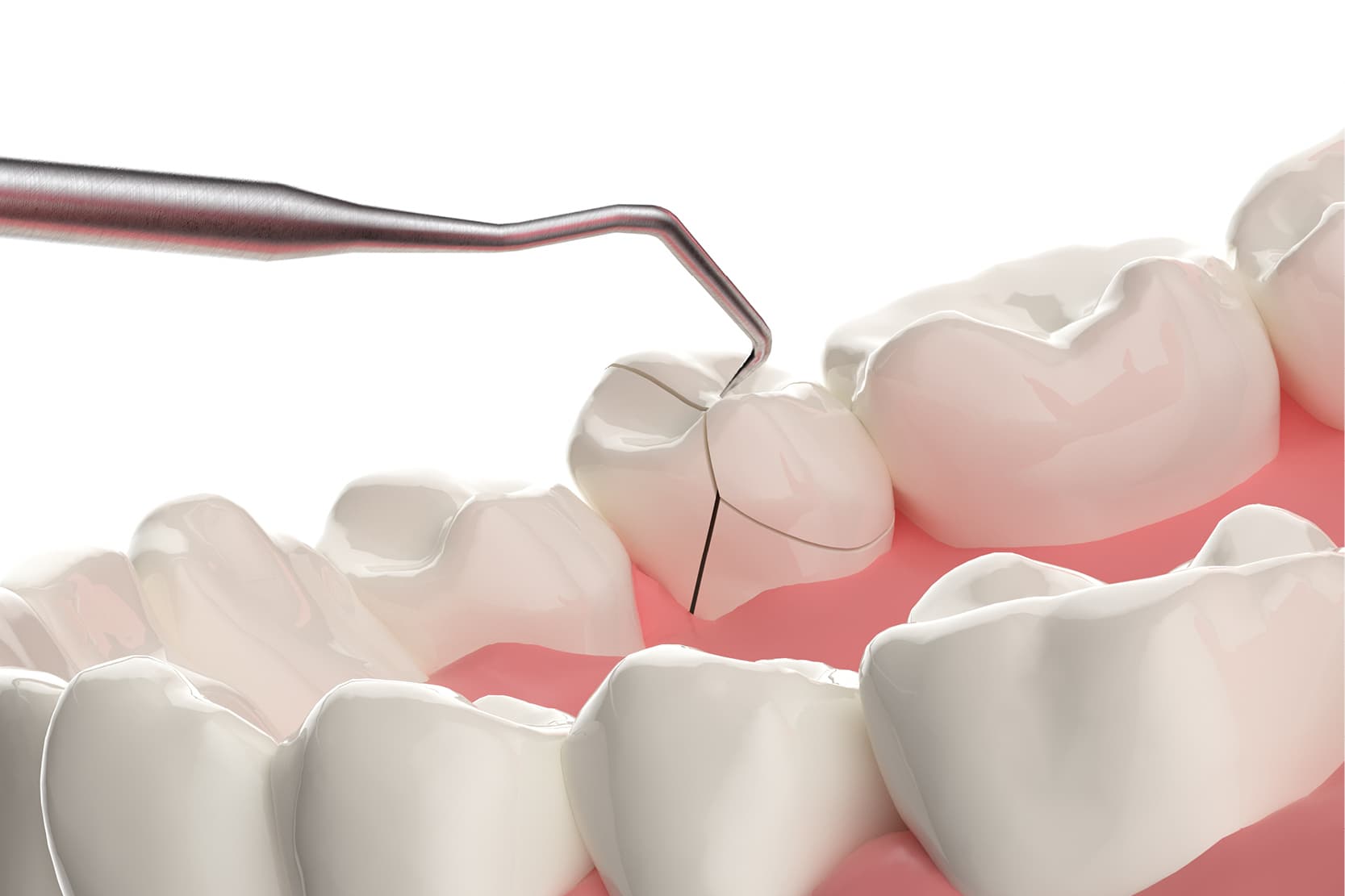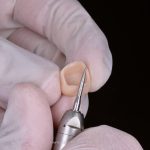
One of the most complex challenges for dentists has always been how to navigate through the many nuances in terms of signs and symptoms of various conditions that can be encountered daily in clinical practice. While a number of treatments may be available, there can only be one diagnosis, which means that clinicians have to focus absolute attention during every stage of diagnostic investigation.
In this context, a series of signs and symptoms have been categorised in recent years, which identify a new syndrome: cracked tooth syndrome.
Identification of this new syndrome has made it possible in many cases to perform a more precise differential diagnosis and recognise a series of symptoms and clinical signs that are difficult to classify in other conditions.
It was only in 2022 that the World Dental Federation‘s DPC (Dental Practice Committee) officially published a series of materials aimed at helping clinicians prevent, identify and treat cracked tooth syndrome. (1)
Cracked tooth syndrome: definition and causes
First of all, what do we mean by a cracked tooth? (1-4)
A cracked tooth is a tooth in which an incomplete fracture is observed, which may extend from the occlusal surface apically up to the root structure without causing an actual separation.
Sometimes this fracture line extends below the gum line, reaching the root anatomy of the tooth and, in certain cases, the pulp tissue may also be involved.
What causes a cracked tooth? (1-7)
The aetiology is certainly based on multiple factors. Excessive force applied to healthy teeth or physiological forces applied to structurally weakened teeth can lead to incomplete fractures of the enamel and dentin. (8)
Four main aetiological factors are identified (6):
- Restorative procedures
- Occlusal factors
- Behavioural factors
- Miscellaneous factors
The coexistence of multiple causal factors leads more easily to the development of an incomplete fracture and the onset of cracked tooth syndrome.
A structurally sound tooth can only fracture if it is subjected to extreme forces or some type of trauma during chewing.
Conversely, a tooth that is structurally weakened by extensive reconstruction or has detrimental structural characteristics may fracture even under the application of physiologically submaximal forces.
Concepts such as cyclic fatigue are also part of the aetiology. Functional repetition of chewing cycles can cause an asymptomatic superficial fracture line (craze line) to spread until it becomes symptomatic.
What are the symptoms of a cracked tooth?
The symptoms of a cracked tooth (1-8) vary according to the position, the crown-to-root extension and the depth of the fracture.
Discomfort is often observed for several months with the occurrence of sharp pain during chewing or when drinking cold beverages.
A typical feature is “rebound pain” or the onset of pain when, during the chewing of foods with a fibrous consistency, the pressure is relieved by opening the mouth. Pain may also be triggered by eating sugary foods or during bruxism or eccentric jaw movements.
It may be difficult for patients to localise the pain as they are often unable to pinpoint a particular tooth. There is usually no increased response to warm thermal stimuli. If there is contact (microleakage) with the pulp tissue, chronic pulpitis may occur over time without development of clinical symptoms. Fractures with direct pulpal involvement can cause instead pulpal and periodontal symptoms.
Diagnosis of a cracked tooth
Diagnosing a cracked tooth is certainly complex (1-8) and must be included in the differential diagnosis with various pathological situations. The diagnosis is based on an accurate case history, the detailed collection of symptoms and the precise investigation of the major aetiological factors.
Next, it is important to check the symptoms during chewing and check the sensitivity to thermal and osmotic stimuli.
“Rebound pain” that is relieved during chewing should make the clinician suspicious. During the examination, preferably carried out with magnifying instruments and a probe, it is necessary to search thoroughly for any fracture line, even very superficial ones, since the fracture can extend deep down.
Methylene blue can also be used to superficially highlight fracture lines.
Another way to check for the presence and extent of fractures is through transillumination. Applying a strong light source and checking its dispersion within the dental tissues can help observe a fracture line. Since fractures usually have a mesio-distal direction, X-rays are often not an effective diagnostic aid.
How is cracked tooth syndrome treated?
We will now delve deeper into how a cracked tooth is treated. (1-8)
If the fracture line reaches the pulp tissue then root canal therapy is required, along with prosthetic rehabilitation, with the aim of protecting the residual structure; therefore, a traditional crown will be chosen.
However, if the fracture line extends below the gum line, rehabilitation is more complex and, therefore, prompt treatment is recommended. An untreated cracked tooth will tend to worsen over time and the prognosis will be progressively worse.
The best treatment, in these cases, is to cover the tooth with a prosthetic crown. Even if this very cautious therapeutic option is selected, success cannot be guaranteed in all cases.
In fact, sometimes, whatever the treatment performed, the fractures continue to spread and lead inexorably to the loss of the tooth.
Treating a cracked tooth is important because it removes the pain and makes the crack less likely to spread.
In all cases, it is absolutely paramount to correctly inform the patient about the prognosis of the cracked tooth.
References
- https://www.fdiworlddental.org/sites/default/files/2022-07/FDI%20Cracked%20Tooth%20Syndrome.pdf
- Hasan, S., Singh, K., & Salati, N. (2015). Cracked tooth syndrome: overview of literature. International Journal of Applied and Basic Medical Research, 5(3), 164-168.
- Banerji, S., Mehta, S. B., & Millar, B. J. (2010). Cracked tooth syndrome. Part 1: aetiology and diagnosis. British dental journal, 208(10), 459-463.
- Mamoun, J. S., & Napoletano, D. (2015). Cracked tooth diagnosis and treatment: An alternative paradigm. European journal of dentistry, 9(02), 293-303.
- Ellis SG. Incomplete tooth fracture – Proposal for a new definition. Br Dent J 2001;190:424-8.
- Lynch, C. D., & McConnell, R. J. (2002). The cracked tooth syndrome. Journal-Canadian Dental Association, 68(8), 470-475.
- Li, F., Diao, Y., Wang, J., Hou, X., Qiao, S., Kong, J., … & Jiang, H. B. (2021). Review of cracked tooth syndrome: etiology, diagnosis, management, and prevention. Pain Research and Management, 2021(1), 3788660.
- Geurtsen W. The cracked#LioxSpecialChar8209#tooth syndrome: Clinical features and case reports. Int J Periodontics Restorative Dent 1992;12:395#LioxSpecialChar8209#405.
Would you like more information about Zhermack Dental products and solutions?
Contact us

 Zhermack SpA has been one of the most important producers and international distributors of alginates, gypsums and silicone compounds for the dental sector for over 40 years. It has also developed solutions for the industrial and wellbeing sectors.
Zhermack SpA - Via Bovazecchino, 100 - 45021 Badia Polesine (RO), Italy.
Zhermack SpA has been one of the most important producers and international distributors of alginates, gypsums and silicone compounds for the dental sector for over 40 years. It has also developed solutions for the industrial and wellbeing sectors.
Zhermack SpA - Via Bovazecchino, 100 - 45021 Badia Polesine (RO), Italy.


